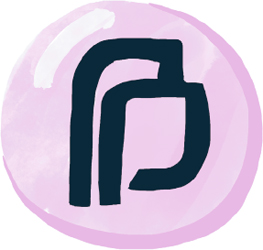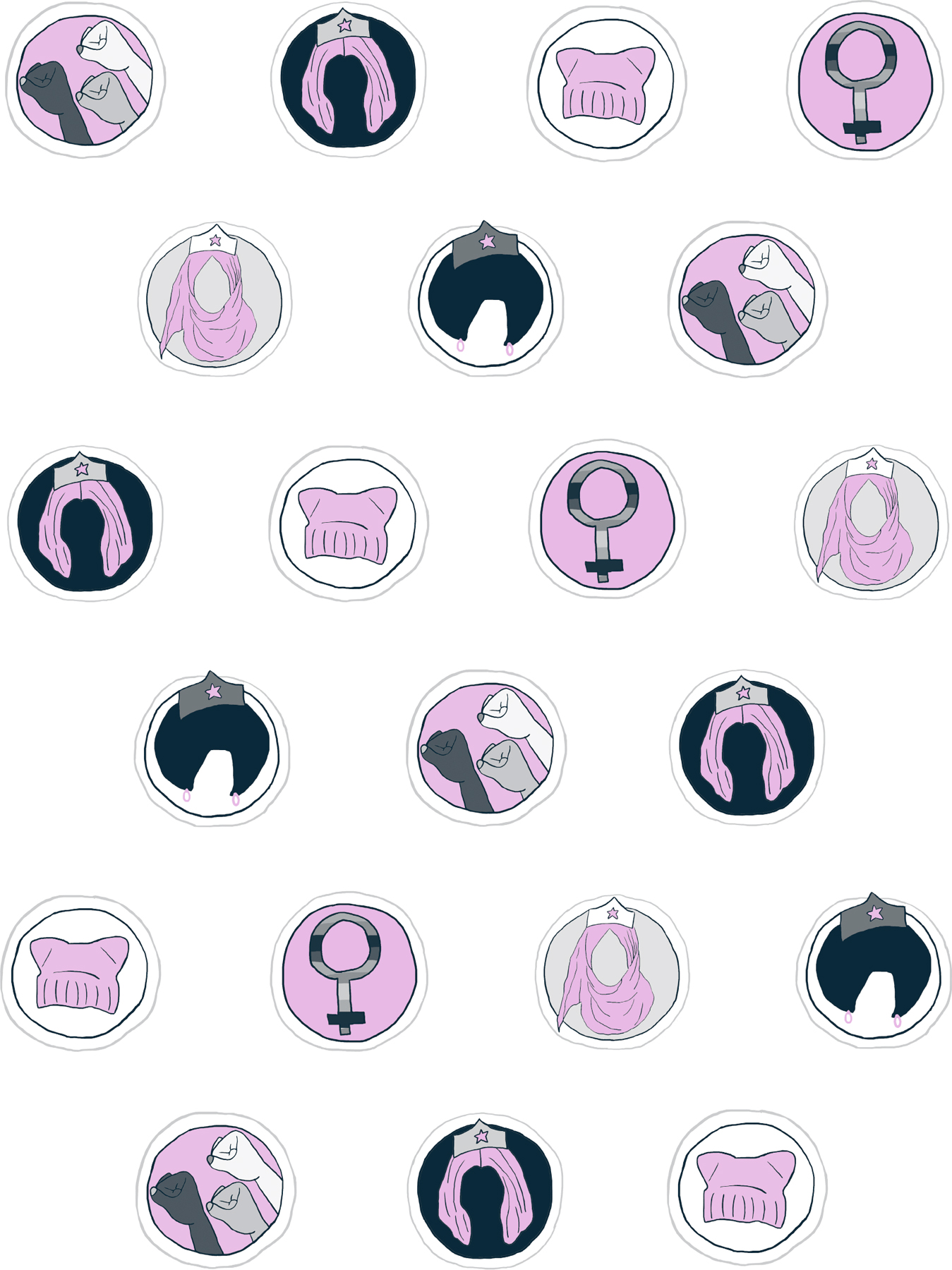
On March 25, 1993, Congresswoman Pat Schroeder stood on a podium in front of hundreds of thousands of LGBTQ people and their allies in Washington, DC. This crowd was gathered with a list of clear demands, among them, government action on the AIDS crisis, a lift of the ban on gay people serving in the military, and legislation to protect LGBTQ families.
“Remember as we stand in this great capital of this wonderful nation, when we say the pledge of allegiance, we say ‘with liberty and justice for all,’” Schroeder declared. “Well, what part of ‘all’ don’t people understand? We mean all.”
The New York Times described the tone of this march—the March on Washington for Lesbian, Gay, and Bi Equal Rights and Liberation—as “one of pride, of feeling part of a larger gay community and not being afraid to march down the street to proclaim it,” and commented that “many marchers were accompanied by small children and parents.”1 I was one of those children.
I’m not sure if this was the first protest or march I ever attended, but it’s certainly the first one I can remember. I was five years old, and from where I was sitting—in my younger brother’s stroller, being pushed by a rotating cast of my mother, my father, and my grandma—it looked joyful, a crowded downtown DC filled with colorful people and rainbow flags and shirtless women wearing stickers to cover their nipples. (I remember being particularly curious about that.) In the one photo I have from that day,2 I’m holding a rainbow flag in my hand, peeking out from underneath a painfully nineties neon-blue hat. My grandmother is wearing a PFLAG sash, and a smiling woman with a cropped haircut in the background is holding up a sign that reads, simply, LESBIAN RIGHTS.

It’s unclear how much I actually understood about what was going on that day, but something about the magic of being in a crowd unified by common purpose and love and anger made it into my subconscious. I’ve been to many protests and marches since that one, first as a participant and later as a journalist. And each time I remember again the magic of that collective energy I witnessed at age five. I marched in protest of the Iraq War and in support of Planned Parenthood. I got to interview children and parents who attended Occupy Wall Street’s family sleepover in 20123—“I think it’s good for kids to participate in democracy,” mother of two Megan Davidson told me at the time. “This is what democracy looks like.” I got to document New York City’s first marches in solidarity with Black Lives Matter. And on January 21, 2017, I was back in Washington, DC, witnessing history—or, rather, herstory—at the Women’s March.4

Along with my coworkers Alanna, Catherine, and Damon, I spent the day weaving through the crowds, speaking to women, men, and children about why they were out there—on that day, in that place, together. Every person who took the time to talk to us had a moving reason, but one eighty-three-year-old woman, who had shown up with her cane and her three girlfriends clad in custom pink NASTY (OLD) WOMAN sweatshirts, made a lasting impression.
Susan had been in the protest game for decades. She had shown up for her black brothers and sisters in the 1960s, at the height of the civil rights movement. “I marched from Selma to Montgomery,” she told me, “and I truly believe in the energy and the spirit of mass protest.”
* * *
That date of that march, March 7, 1965, came to be known as “Bloody Sunday,”5 for the brutal and televised police violence used against protesters on the Edmund Pettus Bridge in Selma, Alabama.
The Student Nonviolent Coordinating Committee (SNCC) had been working to register black voters around Selma for months and facing great resistance from the state government and law enforcement. In February of 1965 a police officer shot twenty-six-year-old activist Jimmie Lee Jackson as he rushed over to help his mother during a peaceful civil rights demonstration. About a week later, on February 26, Jackson died. In response, the march from Selma to Montgomery (the capital of Alabama) was planned.6
Many are familiar with the key male players of that march and the marches that followed: Dr. Martin Luther King Jr., of course; now-congressman John Lewis, James Bevel, Hosea Williams. But women activists were also a key driving force: Diane Nash, Amelia Boynton Robinson, Annie Lee Cooper, Viola Liuzzo, and more.
For Diane Nash, who was twenty-six when Bloody Sunday took place, the impetus behind the march from Selma to Montgomery came earlier than 1965. Around the fiftieth anniversary of Bloody Sunday, she remembered the 1963 Ku Klux Klan bombing of a Baptist church in Alabama, which resulted in the deaths of four young black girls.
“The day the girls were murdered in the bombing at the Sixteenth Street Baptist Church in Birmingham, [then-husband James Bevel] and I wrote the initial plan for what became the Selma Right to Vote movement,” she told a local ABC news station7 in March 2015.
For several years she and James tried to convince Dr. King to join them in Alabama. Eventually they succeeded.
On that fateful Sunday, some six hundred demonstrators marched through downtown Selma to the Edmund Pettus Bridge, named for a Confederate general. Halfway across, they saw a human wall of state troopers on the other side, as white locals looked on.

The New York Times described what happened next:8
The scene in Selma resembled that in a police state. Heavily armed men attacked the marchers. [. . .] Tear gas was used. [. . .] Witnesses “said they saw possemen using whips on the fleeing Negroes as they recrossed the bridge.” If this is described as law enforcement, it is mis-named. It is nothing more nor less than race-conscious officialdom run amuck. It disgraces not only the state of Alabama but every citizen of the country in which it can happen.
The video footage of this brutal altercation—and the peaceful response of the protesters who were being attacked—was broadcast across the nation, leading to more marches, more violence, and widespread outcry.
Eventually, the protests succeeded and the Voting Rights Act, which prohibits racial discrimination in voting and removed barriers to registration such as poll taxes and literacy tests, was signed into law by President Lyndon Johnson on August 6, 1965 (sadly in 2013 essential parts of the VRA were gutted by the Supreme Court).
While Diane is widely recognized as a leader in the civil rights movement, and was immortalized in the Ava Duvernay–helmed film Selma, she has always been careful to point out that the fight for civil rights depended on a movement rather than an individual.
“It took many thousands of people to make the changes that we’ve made,” she said in 2015. “People whose names we’ll never know. They’ll never get credit for the sacrifices they’ve made, but I remember them.”
* * *
Public acts of resistance are effective because they can more easily be amplified by passersby and the media. One person on a street corner can go unnoticed—or at least be tuned out. But get fifty or five hundred or five thousand or fifty thousand people together, all unified around one issue, and they become a hell of a lot harder to ignore.
Today’s resistance is fueled by collective action—on social media, at town halls, in the streets. Collective, or at the very least coordinated, actions tend to receive media coverage, and media coverage makes it easier to hold elected officials’ feet to the fire. Momentum begets momentum.
But when you don’t have fifty thousand (or even five hundred) people in one place, deploying your voice wisely can suffice. In an era dominated by 24/7 TV and web news coverage, as well as social media, getting your voice heard is far easier. (Any girl with a Twitter or Instagram account understands that.)
Look no further than Deja Foxx. Just days before her seventeenth birthday, the Tuscon, Arizona, teen showed up at Republican senator Jeff Flake’s April 2017 town hall with a question: “Why would you deny me the American dream if Planned Parenthood is helping me reach it?”
Less than a week prior, Senator Flake had voted to allow states to block Title X family-planning funding for health care providers that also perform abortions—such as Planned Parenthood. (The Hyde Amendment already prevents federal Medicaid coverage for abortion services unless a woman’s life is in danger, or in cases of rape and incest.) Foxx, along with many other Arizonans, showed up to speak to Flake when he returned to his home state.
“I just want to state some facts,” she told the senator. “I’m a young woman; you’re a middle-aged man. I’m a person of color, and you’re white. I come from a background of poverty, and I didn’t always have parents to guide me through life; you come from privilege. I’m wondering, as a Planned Parenthood patient and someone who relies on Title X, who you are clearly not, why is it your right to take away my right to choose Planned Parenthood?”9
Her questions were met with huge cheers and applause from the other constituents gathered. Mere hours later, the video footage of her exchange with Senator Flake went viral, because, quite simply, Deja is a total badass. Her questions were pointed, personal, and effective—and Senator Flake responded with meaningless platitudes.
When I spoke to Deja, the week after her exchange with the senator, she told me that she’s always had the spirit of activism in her life but that she had really begun getting involved in more formal organizing when she joined the fight for comprehensive sex ed in her Arizona school district. And which organization provided mentorship and leadership trainings for her and her peers? Planned Parenthood.
For Deja, the fight for sex education and birth control access felt personal.
“That fight was especially personal for me because, without parents, I relied on my school to provide me with factual, medically accurate, and updated information to help me make educated decisions about my future,” she said. “It became even more personal as I watched my peers grow as leaders in the process, and I felt a real sense of pride in having taken part in empowering them. That sense of pride and goal of empowerment is what encourages me to continue fighting.”
The fight against injustice will always be long and often discouraging. The only way to persist is to choose a cause you feel that your life—and the lives of others—depends on, one you can speak to from (for lack of a better, less cheesy phrase) the heart. There’s a reason that thousands of people showed up to town halls across the country to express their displeasure with the GOP health care plan(s) and to demand that their elected officials not try to take away health care from poor and middle-class people. Those stories created change.
“Small acts of resistance when done by many people are the seeds of solidarity,” Deja told me. “Standing united and experiencing compassion when faced with the struggles and stories of others is what makes us stronger in the face of divisive political force.”
